


xxxxxThe German mathematician Carl Friedrich Gauss used his skill in the service of astronomy in the opening years of the 19th century. He devised a new, faster method of calculating the orbit of an asteroid, later published in his Theoria Motus Corporum Coelestium of 1809. By this means he calculated the orbit of Ceres and predicted its reappearance. In 1802 he visited the astronomer Heinrich Olbers, and did the same for the asteroid Pallas, discovered by Olbers early that year. Today, however, Gauss is remembered for his contribution in both pure and applied mathematics. He made advances in the concepts and methods of number theory -
CARL FRIEDRICH GAUSS 1777 -
(G3a, G3b, G3c, G4, W4, Va)
Acknowledgements
Gauss: detail, by the Danish portrait painter Christian Albrecht Jensen (1792-
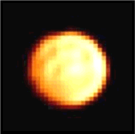 xxxxxThe German scientist Carl Friedrich Gauss, one of the greatest mathematicians of all time, put his fertile mind to astronomy in the opening years of the 19th century. It was during this period that he developed a new, speedier means of calculating the orbit of an asteroid based on just three observations. It was by using this method that he was able to calculate the orbit of Ceres for the first time, the largest asteroid in the solar system (with a diameter of 600 miles) and thought to be a planet when discovered in 1801. And by calculating its position with such accuracy, he was also able to predict its reappearance and make it easy to be relocated. Later, in June 1802, he paid a visit to his fellow countryman Heinrich Olbers at Bremen, and used the same method to calculate the orbit of Pallas, the asteroid Olbers had discovered three months earlier. He explained this new procedure in his Theoria Motus Corporum Coelestium, a two volume treatise on the motion of celestial bodies, published in 1809.
xxxxxThe German scientist Carl Friedrich Gauss, one of the greatest mathematicians of all time, put his fertile mind to astronomy in the opening years of the 19th century. It was during this period that he developed a new, speedier means of calculating the orbit of an asteroid based on just three observations. It was by using this method that he was able to calculate the orbit of Ceres for the first time, the largest asteroid in the solar system (with a diameter of 600 miles) and thought to be a planet when discovered in 1801. And by calculating its position with such accuracy, he was also able to predict its reappearance and make it easy to be relocated. Later, in June 1802, he paid a visit to his fellow countryman Heinrich Olbers at Bremen, and used the same method to calculate the orbit of Pallas, the asteroid Olbers had discovered three months earlier. He explained this new procedure in his Theoria Motus Corporum Coelestium, a two volume treatise on the motion of celestial bodies, published in 1809.
 xxxxxGauss was born in Braunschweig (today’s Brunswick). A precocious child, by the age of three he was able to read, and was showing a marked aptitude in arithmetic. He attended the city’s Collegium Carolinum, and after studying mathematics at the University of Gottingen from 1795 to 1798, gained a doctorate from the University of Helmstedt, his thesis providing the first proof -
xxxxxGauss was born in Braunschweig (today’s Brunswick). A precocious child, by the age of three he was able to read, and was showing a marked aptitude in arithmetic. He attended the city’s Collegium Carolinum, and after studying mathematics at the University of Gottingen from 1795 to 1798, gained a doctorate from the University of Helmstedt, his thesis providing the first proof -
xxxxxHis achievements in astronomy gained him overnight recognition, but today Gauss is especially remembered for the major advances he made in pure mathematics during the 1790s, and then in applied mathematics later in his career. His pioneering work concerning the concepts and methods of 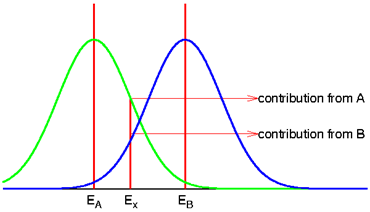 number theory (which included his prime-
number theory (which included his prime-
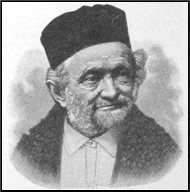 xxxxxNo less important in his research projects was his application of mathematics to the study of electricity and magnetism. Here again his name is still remembered. In recognition of his pioneer work in that direction, the unit of magnetic induction is still known as a “gauss”. Andxit was in this branch of research that during the 1830s he worked with the German physicist Wilhelm Weber (1804-
xxxxxNo less important in his research projects was his application of mathematics to the study of electricity and magnetism. Here again his name is still remembered. In recognition of his pioneer work in that direction, the unit of magnetic induction is still known as a “gauss”. Andxit was in this branch of research that during the 1830s he worked with the German physicist Wilhelm Weber (1804-
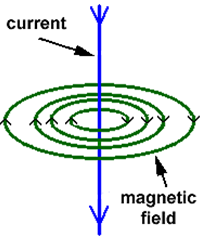 xxxxxIncidentally, as we shall see, research into electromagnetism was to be given an unexpected boost in 1820 (G4) by a chance discovery made by the Danish scientist Hans Christian Oersted. And this break-
xxxxxIncidentally, as we shall see, research into electromagnetism was to be given an unexpected boost in 1820 (G4) by a chance discovery made by the Danish scientist Hans Christian Oersted. And this break-
xxxxx…… At the beginning of the Second World War in 1939 many British ships were lost to magnetic mines. As a steel-
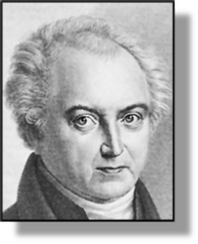
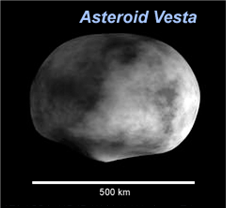 xxxxxAs we have seen, the German astronomer Heinrich Olbers (1758-
xxxxxAs we have seen, the German astronomer Heinrich Olbers (1758-
xxxxxOlbers was not an astronomer by profession. He was born at Arbergen, near Bremen, and after completing a medical course at Gottingen in 1780, he practised as a physician in Bremen for over forty years. However, he was keenly interested in astronomy and spent much time working in an observatory at the top of his house.
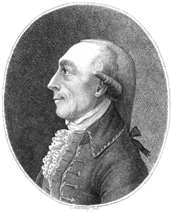 xxxxxItxis interesting to note that some of his discoveries were made while he was working as a founder member of the Celestial Police. This was a group of astronomers who got together in 1800 in an attempt to find a “missing planet”, thought to be orbiting the sun somewhere between Mars and Jupiter. Supported by the German astronomer Johann Schröter (1745-
xxxxxItxis interesting to note that some of his discoveries were made while he was working as a founder member of the Celestial Police. This was a group of astronomers who got together in 1800 in an attempt to find a “missing planet”, thought to be orbiting the sun somewhere between Mars and Jupiter. Supported by the German astronomer Johann Schröter (1745-
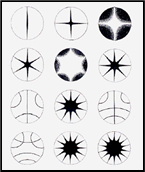 xxxxxAndxitxwas in this year, 1809, that another German, the physicist Ernst Chladni (1756-
xxxxxAndxitxwas in this year, 1809, that another German, the physicist Ernst Chladni (1756-
xxxxxAxfew years later, around 1814, yet another German, the physicist Joseph von Fraunhofer (1787-
Including:
Heinrich Olbers and
the Celestial Police

G3c-


